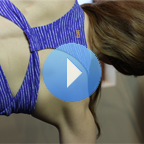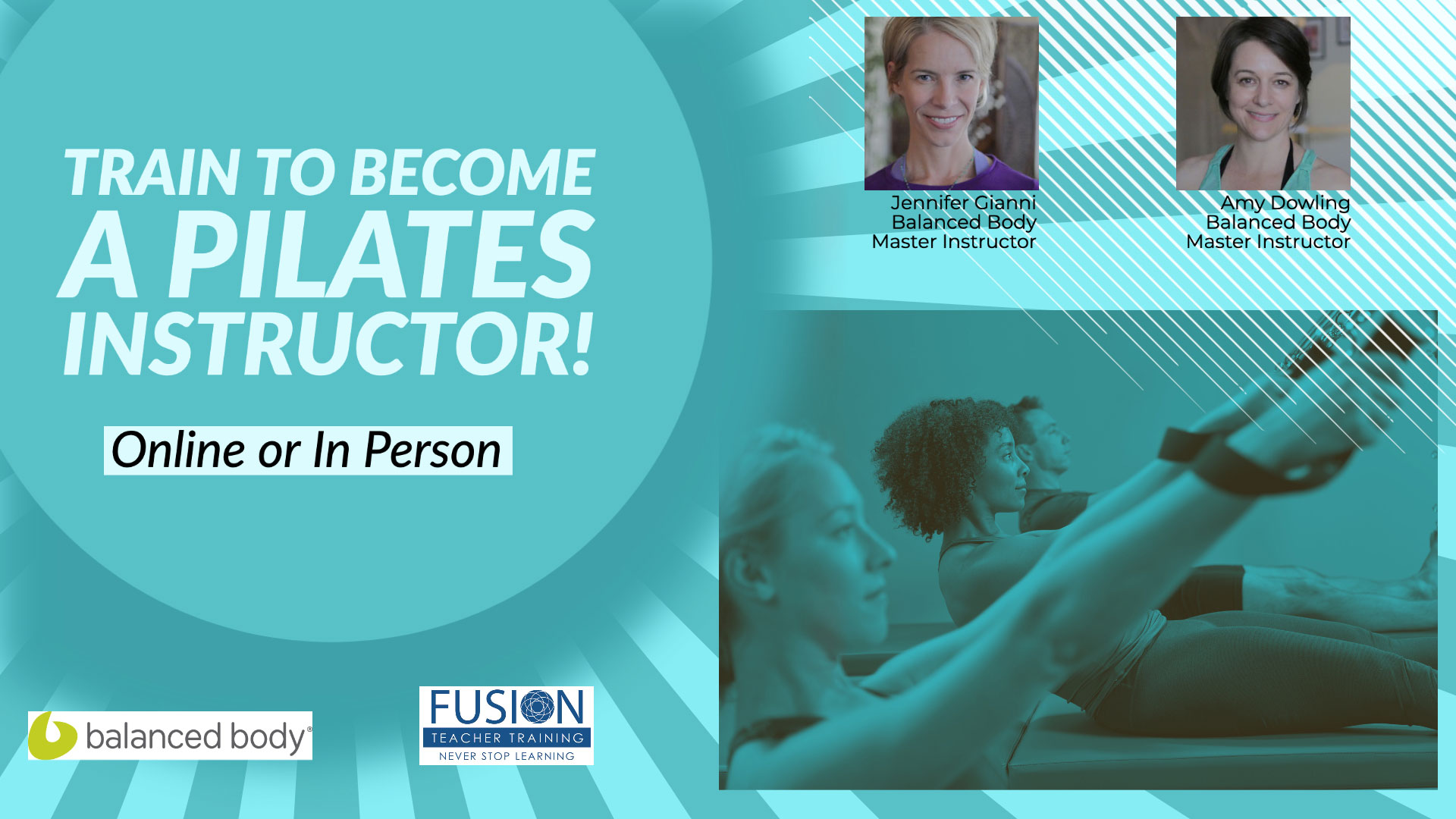 Training the shoulder girdle can be a daunting task with clients. There is so much room for error when working with the arms due to their extreme mobility or lack thereof. Fine tuning and attention to detail is primary when working with this area of the body. The slightest rotation of the humerus can change the communication between the lower arm and the shoulder blade. This can be the means to success in exercises such as the long box arm series on the Reformer. Watch this video to see how a small change has such a large impact on the whole of the body.
Training the shoulder girdle can be a daunting task with clients. There is so much room for error when working with the arms due to their extreme mobility or lack thereof. Fine tuning and attention to detail is primary when working with this area of the body. The slightest rotation of the humerus can change the communication between the lower arm and the shoulder blade. This can be the means to success in exercises such as the long box arm series on the Reformer. Watch this video to see how a small change has such a large impact on the whole of the body.
Hope you enjoyed the video. Comment below!




Leave A Reply (6 comments So Far)
Please - comments only. All Pilates questions should be asked in the Forum. All support questions should be asked at Support.
You must be logged in to post a comment.
I really enjoyed the cueing here! … such a great refresher since this shoulder girdle placement is something I continue to work on for myself and also with clients in this exercise. I see that Jen is in thoracic extension here, and stays in this extension throughout the exercise….normally I have clients come back to more of a prone neutral spine position as the arms lower back down. I really like the pillow as a way to support that extension if clients can’t do so effectively on their own, and experience the exercise a little differently.
In other Pulling Straps exercises where the upper body is not in extension, such as Pulling Down and Airplane, is it better to have a slight extension of the spine in order to more easily get that proper shoulder girdle placement? The rounding of the front of the shoulders is so common, and the tensing of the upper traps…. so I would love any input that can assist my clients (and myself!).
Thanks, as always, for your wonderful videos and support!
Hi Cailin! Great question!
If your clients have a difficult time organizing their shoulder girdle, it is best to keep them neutral in the thoracic spine which does have a bit of spinal flexion. As you know, release work is one of the largest factors in reforming how the shoulder girdle organizes in movement. What would be helpful for your “rounded forward shoulder crowd would be to work them supine first for a while after release work has been done. Gravity helps them to open the pecs and the sternum while being fully supported in a neutral spine by pillows and towels. When doing this also focus on the homescrew mechanism of the arm which is external rotation of the humorous and internal rotation of the radius and ulna. When this is working properly, then go back to the long box series with a neutral spine and an organized shoulder girdle and arms. Once that is mastered, play with adding spinal extension!
Hope that helps Cailin! Let us know how it goes!
Thanks Casey! Yes, this is immensely helpful and makes complete sense. And, ahhh, yes… release work! I did some release work in the shoulder girdle area with a client last week (due to tightness she was experiencing in her right shoulder) before doing supine arms, and this made a huge difference in her range of motion and her comfort. I can definitely understand the logical progression of keep clients in a supine position to establish proper shoulder girdle placement before bringing them to a prone position for pulling straps. Thank you!
I am so happy that this helped Cailin! Your clients are lucky to have such a fantastic, detail oriented teacher! Keep the questions coming and take care!
I love your work! details like this one can make the WHOLE difference in an exercise.
The devil is in the details as they say! So happy that this video is helping you out! Have a good one!